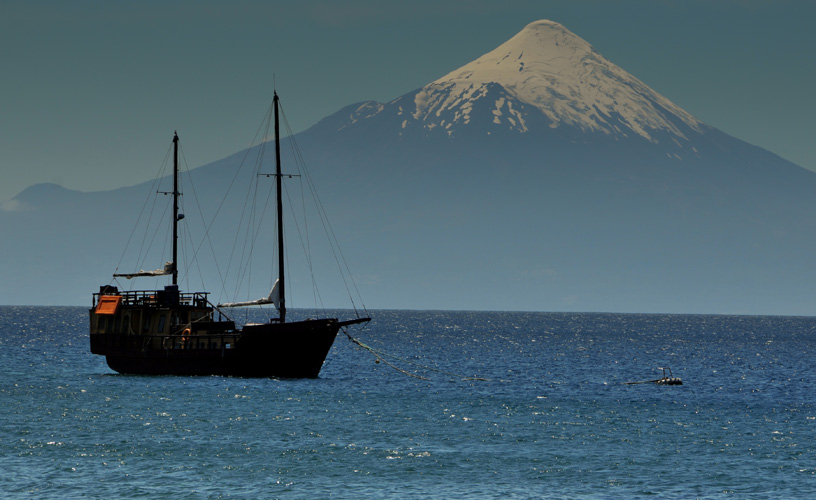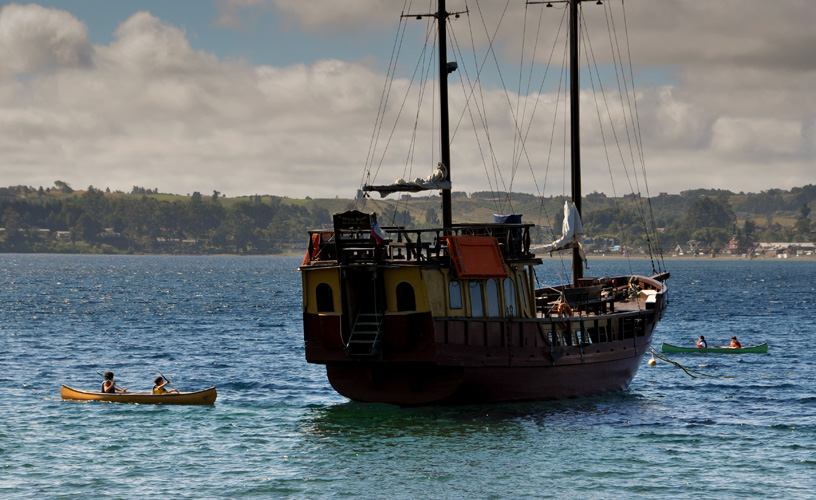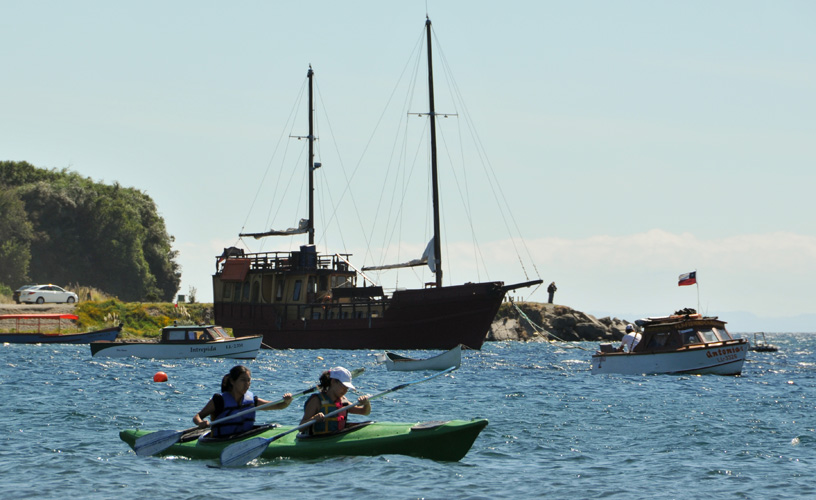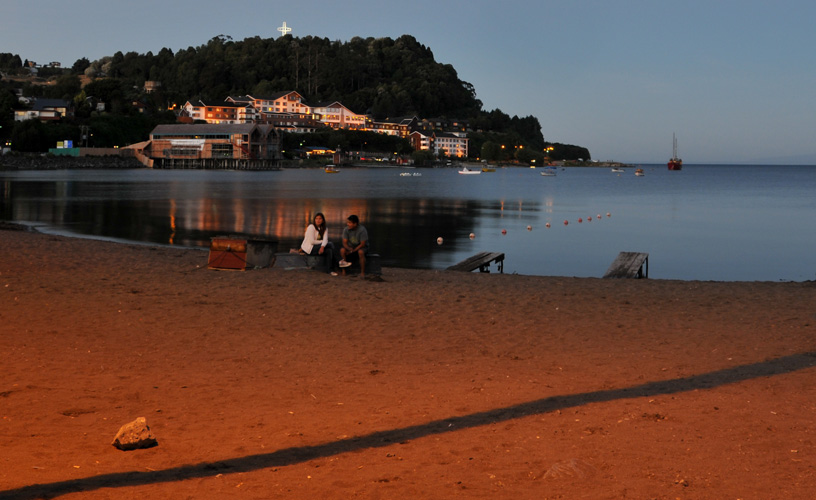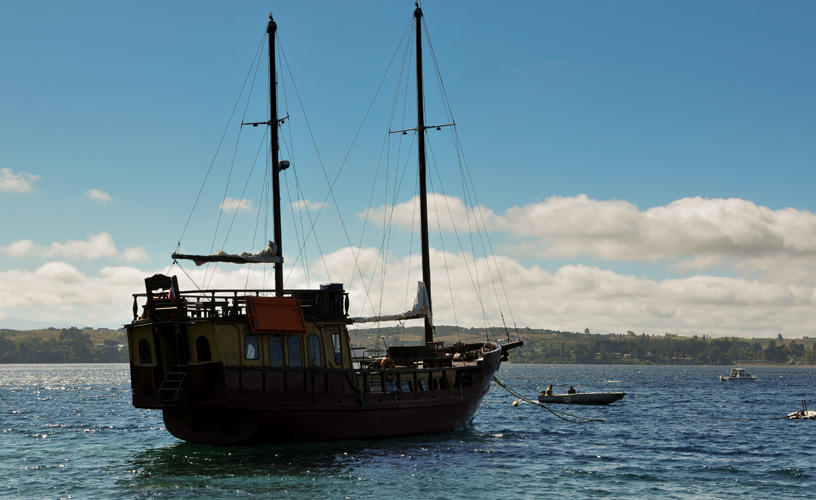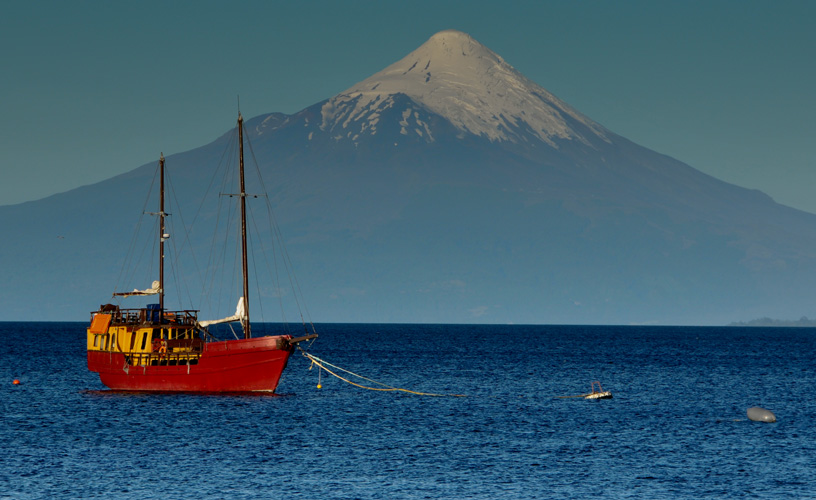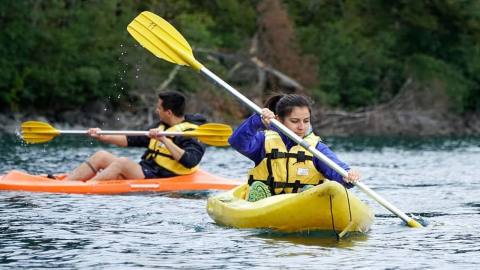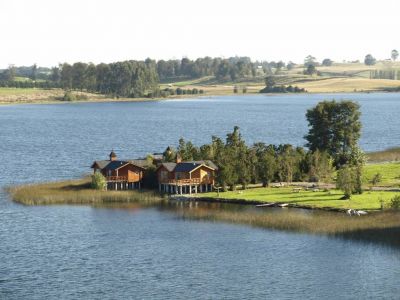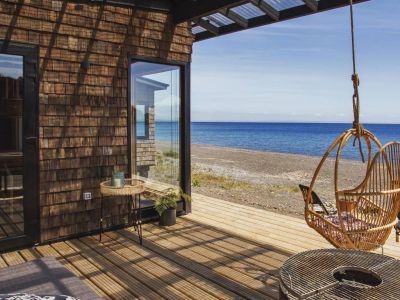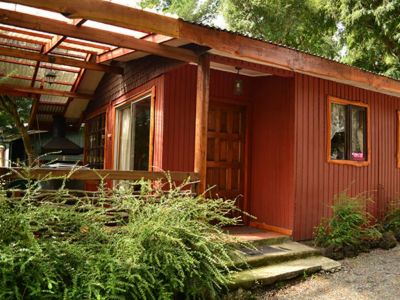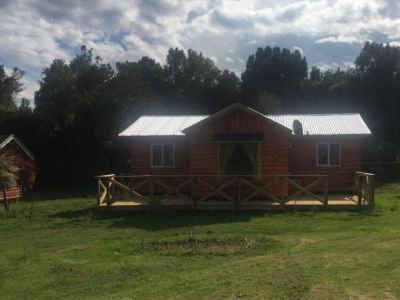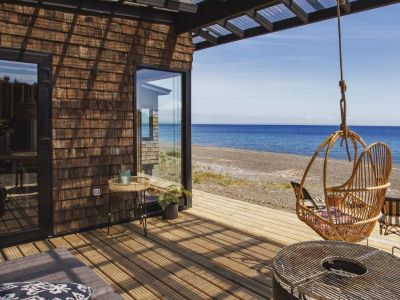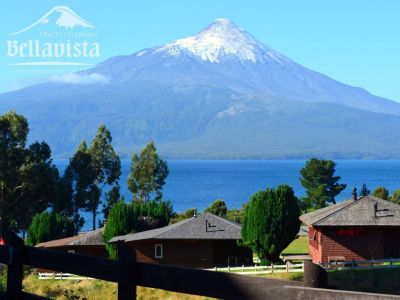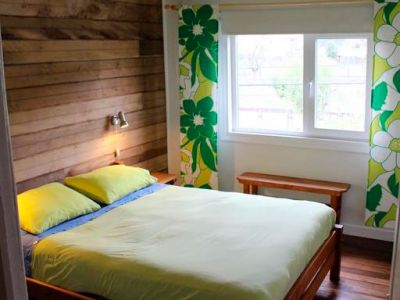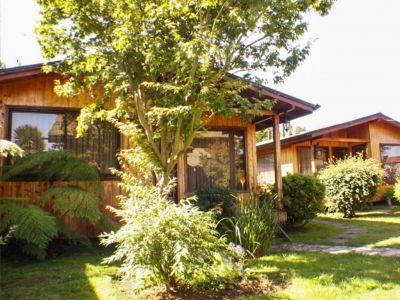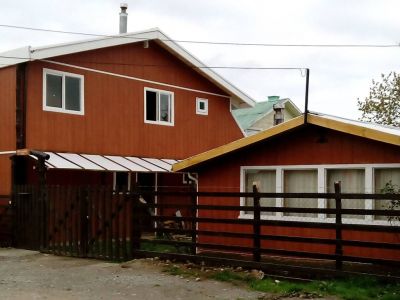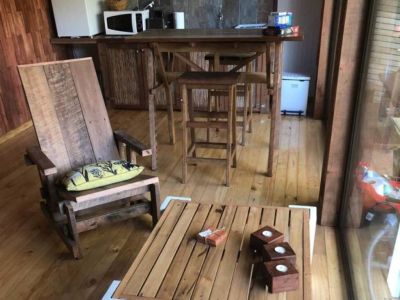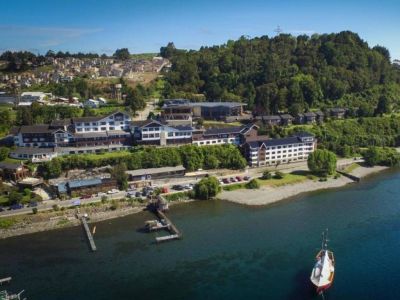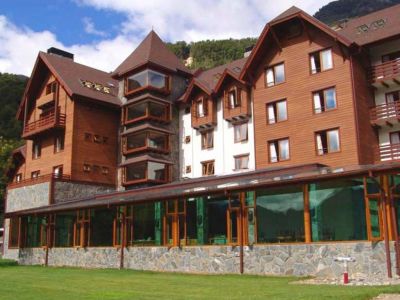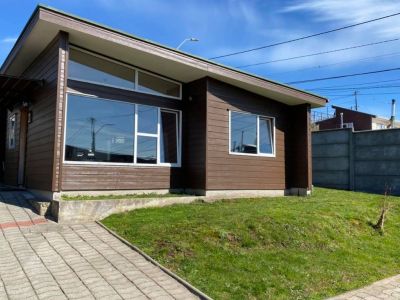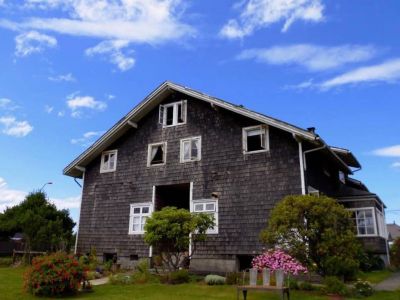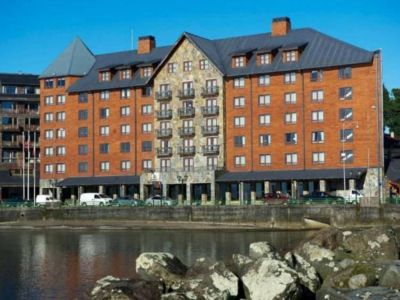On Board the Capitán Haase
The 1960 earthquake represented a retrocession of decades of work, as most of the bridges that had been raised fell down due to the strength of the telluric movement. Investments made after the earthquake contributed to definitely change the face of the bridges –which were built again but this time in concrete- and the roads were enhanced.
Welcome On Board
The Capitán Haase is a 65-foot motorboat designed and built in local wood in the year 1999 with all the comfort and safety provisions indicated in its coastal navigation license. Its capacity enables up to 50 passengers to enjoy its two rooms, its two-mast riggings and modern equipment for navigation that makes it unique in its class. We left early in the morning and, after going along the entire waterfront of Puerto Varas and Ensenada, we headed for the nearby city of Llanquihue. Llanquihue is a small settlement which, like Frutillar and Puerto Octay (the other big cities located on the shores of the lake besides Puerto Varas), used to be part of the German colonization that took place in the area as from 1850. From the boat, we could make out its waterfronts, its typical architectural constructions in wood, its alerce tiles and roofs, its churches, its tea-houses with German pastries and, of course, its settlers, who approach the beaches of the Llanquihue to enjoy the sun and the water, when permitted by the weather. As we sailed on slowly, the mouths of the rivers and creeks began to surprise us due to the large amount of fly-fishermen that would manage real trophies. Even on our boat, we had the chance of hooking a big rainbow trout that began to pursue the spinner at the end one of the rods which was anxiously waiting for a good strike at the stern. And a few meters before we raised the fish on board, it managed to escape, showing nothing but than a couple of healthy and colorful kilos. Thus, as hours passed and each of the passengers would freely perform various activities –some of them would fish, others would sunbathe, take photographs or read some book- the huge and previously unknown lake would now be registered in the memory of each of the witnesses. And every place turned out to be wonderful. However, the last stretch, maybe the longest, became everyone’s favorite spot. The sunset started to keep a beautiful sun inside one of the slopes and the majestic Osorno Volcano, along with its partner, the Calbuco, would watch over our pass. Puerto Varas, slightly lit, would feasibly anticipate the coming of the night and a full moon which in a matter of minutes would assume the leading role. In its silence, it was certain that the Capitán Haase would rest in the bay once again waiting for a new adventure. And thus, among pisco sour, Chilean wines, seafood empanadas and cheese, the anchor stated that the evening would take all night … Pablo Etchevers
Eduardo Epifanio
